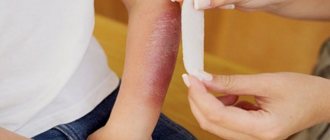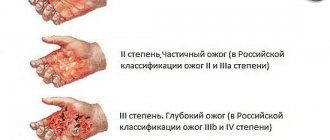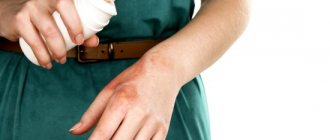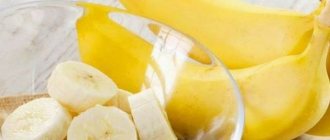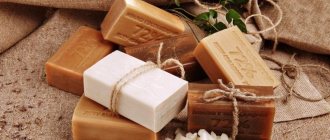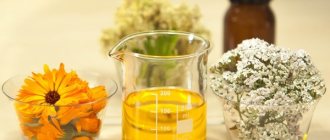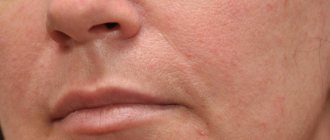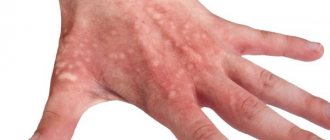Causes of the problem
Weeping wounds mean a damp surface and an increased amount of discharge. The release of serous fluid through the smallest skin defects is observed during inflammatory processes in the dermis. They leak with the formation of bubbles and blisters.
Any wound accompanied by a violation of the skin has a bacterial infection. It becomes wet later, in cases where the immune system cannot cope with a large number of bacteria.
Treatment of weeping wounds after burns
The treatment regimen includes mandatory permanent dressings, as well as the use of antiseptic and wound-healing medications. After a burn, weeping wounds should be treated with drugs that improve blood circulation. It is worth being patient as this is a long process.
Dressings need to be done every day, and in severe cases, repeatedly - it all depends on the moisture content of the dressing. During the procedure, complete sterility is maintained.
Applying ointment to weeping lesions creates conditions that will prevent the separation of fluid and the access of oxygen. This will slow down the scarring. The damaged area is protected by gel from drying out and infection and can “breathe”. When the injury has completely healed, the form of the drug is changed.
Treatment by stages of the process
Weeping wounds have three periods: inflammation, regeneration and scar formation.
At the first stage of inflammation, the affected areas are treated with an antiseptic. For this, “Chlorhexidine”, “Miramistin”, “Furacilin” hydrogen peroxide can be used. After this, a sterile hygroscopic bandage is applied.
The fluid released from the wound promotes its cleansing and healing. At this stage, the dressings are changed frequently. When there is a large amount of moisture released, therapy is carried out using an open method. More complex weeping areas are recommended to be treated with Biaten Ag dressings.
When changing the bandage, the affected area is treated with an antiseptic. Drying antibacterial agents, such as Betadine or iodine preparations, can be used only as prescribed by a doctor.
For severe pain, it is recommended to take painkillers. They can be in the form of tablets, injections or aerosols and are applied topically.
In the purulent-necrotic phase, antibacterial ointments are applied under an hygroscopic bandage. It is contraindicated to use conventional ointments with antibiotics, as they do not provide cleansing. Water-soluble ointments that have proven themselves to be effective are Levomekol, Levosin or Mafenide-acetate.
At the second stage, after the inflammation has stopped, when the wound is clean and the tissue has been restored, a burn patch is applied. It is impregnated with a healing agent, which, upon contact with the damaged surface, turns into a gel and manifests its healing agents.
In the third phase, Solcoseryl ointment is applied several times a day under a sterile gauze bandage. This occurs during the healing and scarring stage of the wound.
In parallel with the main treatment, vitamin therapy is recommended. Vitamins A, C, E promote collagen production and help heal wounds after burns.
Brief description of medications
"Solcoseryl" is the most effective modern wound healing agent
Currently, Solcoseryl is considered one of the most effective wound healing agents. The drug contains substances responsible for nutrition processes, oxygen delivery and tissue restoration. "Solcoseryl" is produced in the form of a gel and ointment. The ointment is suitable for dry wounds. The gel can be used to treat weeping wounds after a burn.
"Lioxazine" - gel for burn wounds
"Lioxazine" is a high-tech, analgesic drug for treatment after a burn. It significantly speeds up healing and prevents injuries from becoming infected at any stage of the process.
Combination drugs
"Amprovisol" is an aerosol for burns. A combined medicine that contains propolis, menthol, anesthesin and vitamin D. It has anti-burn, anti-inflammatory, antiseptic, and analgesic effects. Promotes rapid skin regeneration.
"Olazol" is a wound-healing aerosol for external use after a burn. Combined preparation with sea buckthorn oil. It has an antibacterial, anesthetic effect, reduces exudation, helps tissue restoration and accelerates the process of epithelization.
Treatment methods using folk remedies
The most effective folk remedies:
- potato;
- onion;
- aloe juice;
- calamus;
- sea buckthorn oil;
- St. John's wort;
- calendula officinalis;
- pharmaceutical camomile;
- eucalyptus.
Potato
Fresh potatoes are peeled, grated, the juice is squeezed out, a sterile bandage is moistened with it and applied to the damage. Change the dressing every six hours.
Onion
The onion head is grated on a fine grater, the pulp is wrapped in a gauze cloth and applied to the sore spot. Onions cleanse the wound, reduce pain and swelling.
Description
A person faces various types of trauma throughout his life, starting from childhood. Before treating a lesion, you need to know everything about this type of injury. The damage is a violation of tissue trophism, which can be localized in various parts of the body. Weeping damage can cover different areas and depths of penetration. In this case, various structures from the dermis and blood vessels to bones and internal organs can be affected. Non-healing weeping lesions occur when the skin humidity is high. The mechanism of occurrence of such burns is similar to the way of formation of ordinary injuries.
There are several phases in it:
- inflammatory process;
- regeneration;
- scarring.
Restoration and healing of weeping type wounds should be carried out according to the scheme. It is necessary to constantly bandage the open wound, use restorative and disinfecting medications.
Wound healing time
Wound healing after a burn depends on several factors:
- Presence of complications. With purulent, necrotic and inflammatory complications, healing is delayed for a long time,
- Patient's age. The younger the person, the faster the healing occurs,
- Timely consultation with a doctor,
- The treatment being carried out
- The presence of chronic pathologies and immunodeficiency pathological conditions.
For small and shallow burns, healing occurs in 1 to 2 weeks. If the burn begins to go silent, the recovery time increases by 7 to 10 days.
With deep and weeping wounds, healing is long and difficult. Restoration of damaged tissue occurs within several months. Often in this case, scarring changes in the skin are formed.
Treatment of weeping wounds after burns
A weeping burn must be treated carefully. In order to reduce the risk of adverse events, it is necessary to thoroughly rinse the injured areas. Carefully remove dust, dirt and pus. A disinfectant medication is applied to damaged tissue. For this manipulation, antibacterial agents such as betadine are used. Hydrogen peroxide has a good effect. If this solution is not available, then soapy water can be used. The skin around the injury site is lubricated with alcohol solutions of brilliant green or iodine. This is done to dry the edges of the damage and prevent infection. The next step is to protect the wound from pathogenic flora. To do this, apply a bandage. If the burn penetrates deeply, you must take painkillers. In some cases, surgery cannot be avoided.
How to treat each stage?
Wet-type injuries have the following periods: the stage of inflammation, recovery and scarring.
So how to treat weeping wounds after a burn? During the inflammatory process, antiseptics are applied to the wound. You can use any available one. After this manipulation, it is necessary to apply a bandage made of sterile material, which will prevent the entry of moisture.
The fluid that flows from the affected area helps restore the wound and speeds up the healing process. During this period, it is necessary to change the dressing as often as possible. If excess moisture is released, then healing is carried out using the open method. For areas of the body where fluid production is highest, hygroscopic dressings are used.
During dressing it is necessary to treat with special means. Antibacterial drugs or alcohol-based products can only be used after being prescribed by a specialist.
If there is severe pain, then it is necessary to take analgesics. This can be in tablet form, injection solutions or special aerosols that are most convenient to apply.
During the purulent-necrotic period, agents with antibacterial activity are applied under the bandage. But you cannot use ordinary ointments with antibiotics for this; they do not cope with cleansing the wound. It is better to give preference to water-based ointments, such as Levosin or Levomekol.
At the second stage, when the inflammation process has already passed, and the lesion is clean and the tissues have been restored, special burn patches are applied to the site of injury. It is impregnated with medicinal preparations, which, upon contact with the skin under the influence of heat, transform into a gel structure and have a therapeutic effect.
How to treat a weeping wound after a burn
It is better to entrust the choice of drug to a doctor. The following are the most effective drugs.
Solcoseryl is one of the most effective medications for healing the skin. It is most often prescribed by doctors for burns. The formula of the medication includes active components that nourish the skin, help deliver oxygen to cells and regenerate cells. Solcoseryl is available in the form of a gel or ointment. For weeping wounds, it is better to use a gel consistency.
Lioxazine is a high-tech medicine that provides pain relief after injury. It is able to accelerate regeneration processes and prevent the penetration of microorganisms into the wound.
Combination drugs
Amprovisol is a medicine in the form of an aerosol. It is very convenient to use for burns, since there is no need to contact the affected area. This remedy helps relieve inflammation in burns, disinfect and anesthetize the wound. Also ensures quick recovery.
Olazol is a local drug with a healing effect. Available in aerosol form. Contains sea buckthorn fruit oil. Due to the antimicrobial, analgesic effect, the process of epithelial restoration is significantly accelerated.
Traditional methods
If the burn gets wet, what should you do at home? You can use folk recipes. The most effective are the following:
Potatoes Young root vegetables are peeled, grated on a coarse grater, and squeezed using gauze. This juice is moistened with a clean dressing material and applied to the wound. The dressing is changed 4 times a day.
Onions The onions must be grated on a fine grater, then the mixture is applied to a bandage and applied to the damaged area. With the help of an onion, the injury site is disinfected, the severity of pain is reduced and swelling is neutralized.
Aloe juice You can squeeze the juice from the leaves of the plant or tear off the skin. The fabric is blotted with liquid and applied to the injury site. When using a whole sheet, it is attached to the wound for several hours.
Sea buckthorn Oil from the fruit of sea buckthorn is an excellent remedy, but before using it to treat a burn it must be sterilized. I apply wipes moistened with this product to the wound. It is better to perform this manipulation once a day.
To treat the wound, prepare a decoction or infusion of water. Take a dry plant and fill it with water, leaving it for several days. Moisten the bandage with this solution.
You can carry out these activities yourself only if the injury is not life-threatening. Before using various remedies, it is important to consult a doctor. The best way to prevent injury is to follow safety precautions and follow all precautionary rules.
What is prohibited to do and possible complications
For wound therapy, special treatment rules must be followed. If the area does not heal for a long time, you need to visit a surgeon. The same applies to postoperative sutures and bedsores that do not heal. Prohibited actions in case of wet damage:
- Interrupt therapy. Treatment and dressings daily, sometimes 2-3 times a day.
- Bandage the injured area with unclean hands. If there are no medical gloves, your hands should be treated with an antiseptic, or, in extreme cases, washed with soap.
- Peel off dried bandages. They are soaked with water.
- Use expired medications to treat weeping wounds and do not follow the instructions for the medication.
If during treatment the amount of fluid discharged increases, the wound begins to ooze and becomes larger in size, throbbing pain, swelling or redness is noticed, or the temperature rises, consult a doctor immediately. If treatment is not carried out correctly, the ulcers grow and affect nearby tissues. Complications such as sepsis and lymphadenitis may develop. If you start the process, the damage will develop into gangrene. Then amputation will be required.
You should not delay your visit to the doctor; one way or another, the course is prescribed by the doctor. Therapy should be comprehensive, with regular supervision by a specialist.
The article has been verified by the editors
In what cases does a wound become wet after a burn?
Having received a second or third degree burn, the victim is faced with the formation of a wound that becomes wet. This occurs due to the formation of blisters, which are peeling skin due to injury. It’s a matter of time before the bubble bursts, and a wound with a weeping surface will inevitably appear at the site of the lesion.
Treatment of a weeping burn involves systematic drying of the wound using agents that form an elastic film on the damaged surface.
Severity of burns
Experts distinguish several degrees of hand burns:
- First . In mild cases, only the top layer of skin is injured. The patient experiences pain and redness of the epidermis, but the integrity is not broken and the nerve endings are not affected. Treatment usually takes 3-4 days.
- Second . The average degree is characterized by damage to the epidermis and the layer below it. Patients experience pain, swelling, and blisters. The burned area may begin to become wet. It is likely that nerve endings are affected. If the blisters rupture, they can become infected. Treatment usually takes about a week.
- Third . In moderate to severe cases, deeper layers are damaged. In this case, the skin acquires a whitish tint.
- Fourth . This is the most severe degree when the dermis is charred. Muscle tissue, tendons, and bones may be affected.
Depending on the severity, a treatment regimen is drawn up.
General principles of treatment
Treatment
When starting to treat an oozing burn, they begin to carry out procedures that dry out the wound. For this:
- treat the damage with an anti-burn antiseptic;
- sprinkle the wound with streptocide powder;
- cover with a sterile gauze bandage.
Another option for treating a wound is the open method of drying - medications are applied to the wound area until the formation of moisture stops without covering the burn with a bandage. In this case, perform the following actions:
- blot the wound with a sterile swab;
- an anti-burn preparation in the form of an ointment/cream is applied to the dried area without rubbing;
- for reliable antiseptics and recovery, the medication should be applied both to the area of damage itself and to adjacent areas of the skin;
- after the drug is absorbed into the wound area, you can resume applying the ointment;
- the open treatment procedure is repeated several times a day;
Do not worry about burning sensations after using the medicine or the formation of redness of the skin, which indicates the active effect of the medicine.
Healing time
A weeping burn usually heals within five days, provided that the damage was small in size and depth. More severe lesions may require two weeks of treatment.
The application of anti-burn drugs with preliminary drying of the wound significantly shortens the recovery period, however, if the affected area is large and it is not possible to dry the wound completely, drying antiseptics should be used and an open method of therapy should be carried out. Of course, it will take longer for the damage to heal.
If the burn gets wet, what should you do at home using traditional medicine recipes?
Alternative treatment methods offer many effective remedies:
- If a burn on the leg does not heal, the wound becomes wet, aloe juice compresses help stimulate regeneration. Soak sterile gauze with plant juice and apply 2 times a day for 3-4 hours. Treat the surface of wet burns until the condition improves and complete recovery.
- Medicinal black root is used for compresses and skin restoration. To do this, take 5 g of crushed root, add 150 ml of water and boil for 20 minutes. Cool the broth, strain and apply applications 2 times a day.
- When a wound after a burn does not heal, soaking cinquefoil or galangal will help eliminate inflammation and prevent infection. For this, 1 tbsp. crushed root is poured with 1 cup of warm butter. Leave for 24 hours, treat the wound 3-4 times a day.
All methods of traditional medicine can be used only as part of complex therapy, not excluding medications.
Treatment of weeping burns with drugs
Sequence of application
Wound surfaces of a weeping nature occur in three stages, according to which therapeutic measures are carried out.
Inflammation
At the initial inflammatory stage, the affected area should be treated with antiseptic drugs, for example peroxide, Chlorhexedine, Furacilin, Miramistin, followed by application of a sterile bandage with hygroscopic properties.
As a rule, at this stage, a clear liquid exudate is actively released from the wound, which cleans it and promotes healing. If the discharge is profuse, wound treatment should be open. If bandages are used, then they must be changed frequently. Extensive burn areas are successfully treated using Biaten Ag dressings.
When changing the bandage, the wound surface is treated with an antiseptic each time. If there is a doctor's prescription, treatment with drying agents with antibacterial properties (iodine, Betadine) is practiced.
